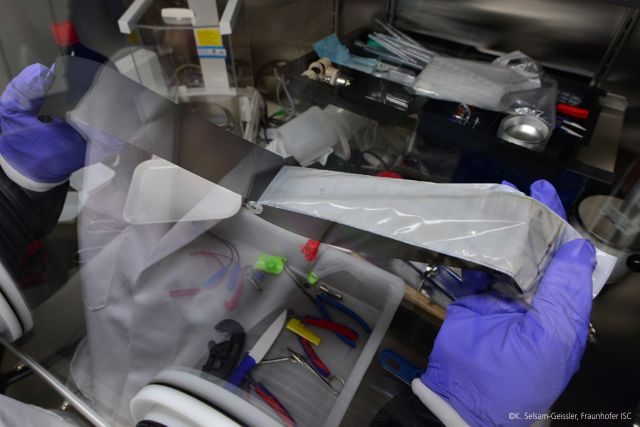What hurts a battery? – Project “ReViSEDBatt“ launched to identify the causal mechanisms for damage from mechanical stresses
Lithium-ion batteries are subject to a myriad of negative influences during their life span. The mere production process itself and subsequent transport from the production site impose mechanical stress. Whether in power tools, electrically driven forklift trucks, cars or trains – their life will always be full of vibration, sudden impact or shock whenever obstacles have to be crossed, when they are dropped or simply when charging or discharging induces volume changes in their electrodes. In late 2017, the project “ReViSEDBatt“ was launched to investigate the effects of mechanical stresses on the cycle life and safety of lithium-ion batteries. The overall project goal is to optimize batteries so they can better cope with everyday stress.
Next to production cost, it is range, life span and safety that matter most when discussing lithium-ion batteries in electromobility or elsewhere. Media around the world show pictures of batteries burning. On the other hand, the focus remains on cycle life and range – the “range“ of a whole production day without having to charge is imperative for industrial application. And drivers of e-cars rely on sufficient range not to end up stranded beyond reach of the next charging station.
Battery aging – the gradual decrease in charging capacity over time – is a key factor when it comes to battery range and life span. The interplay between temperature and battery performance resp. aging has been studied at length, but relatively little is known about the influence of mechanical stress imposed on batteries during production and operation.
The joint project “ReVisedBatt“ (Resonances, vibrations, shocks and externally imposed mechanical stresses on lithium-ion batteries and new detection methods), funded by the Federal Ministry for Economic Affairs and Energy (BMWi) within the scope of the 6th Energy Reserach Program, will investigate the short and long term effects of mechanical stresses on batteries. Project coordination was assigned to the Fraunhofer R&D Center Electromobility Bavaria located at the Fraunhofer ISC in Würzburg. An industry consortium of battery developers and producers as well as manufacturers of battery-driven products from power tools to electric vehicles will work alongside the Fraunhofer ISC and other notable research institutions. The project goal is to identify mechanically induced damages and effects of aging in lithium-ion batteries, to understand the causal mechanisms in battery cells and modules, and ultimately to provide optimization guidelines for users and producers. The overall aim is to prevent damage or to detect it at an early stage, to identify the most robust cell type and to maximize safety and cycle life of future batteries.
As it takes time before the effects of mechanical stresses become apparent in a cell, the task of identifying their root cause is a very challenging one, even more so, since the registration of such effects during actual service is hardly possible at all. To gather a comprehensive and general understanding of these effects, the project sets out to test all common cell types – cylindric, prismatic, pouch-type and hardcase-type – in near real life static and dynamic stress scenarios and then study resulting damage. Such damage may be due to external mechanical strain at battery module manufacturing or due to the periodic pressure force change within the battery module as a result of the characteristic cell-volume change during charging. Also under investigation will be production-induced influences, e.g. from the joining technique chosen for battery module production. Another goal is to develop new methods for detecting and locating damages online and to integrate the detection algorithms in battery management systems. Only then will the early registration of critical states be made possible.
For more information look at our Website of Fraunhofer R&D Center for Electromobilty Bavaria.
Last modified:

